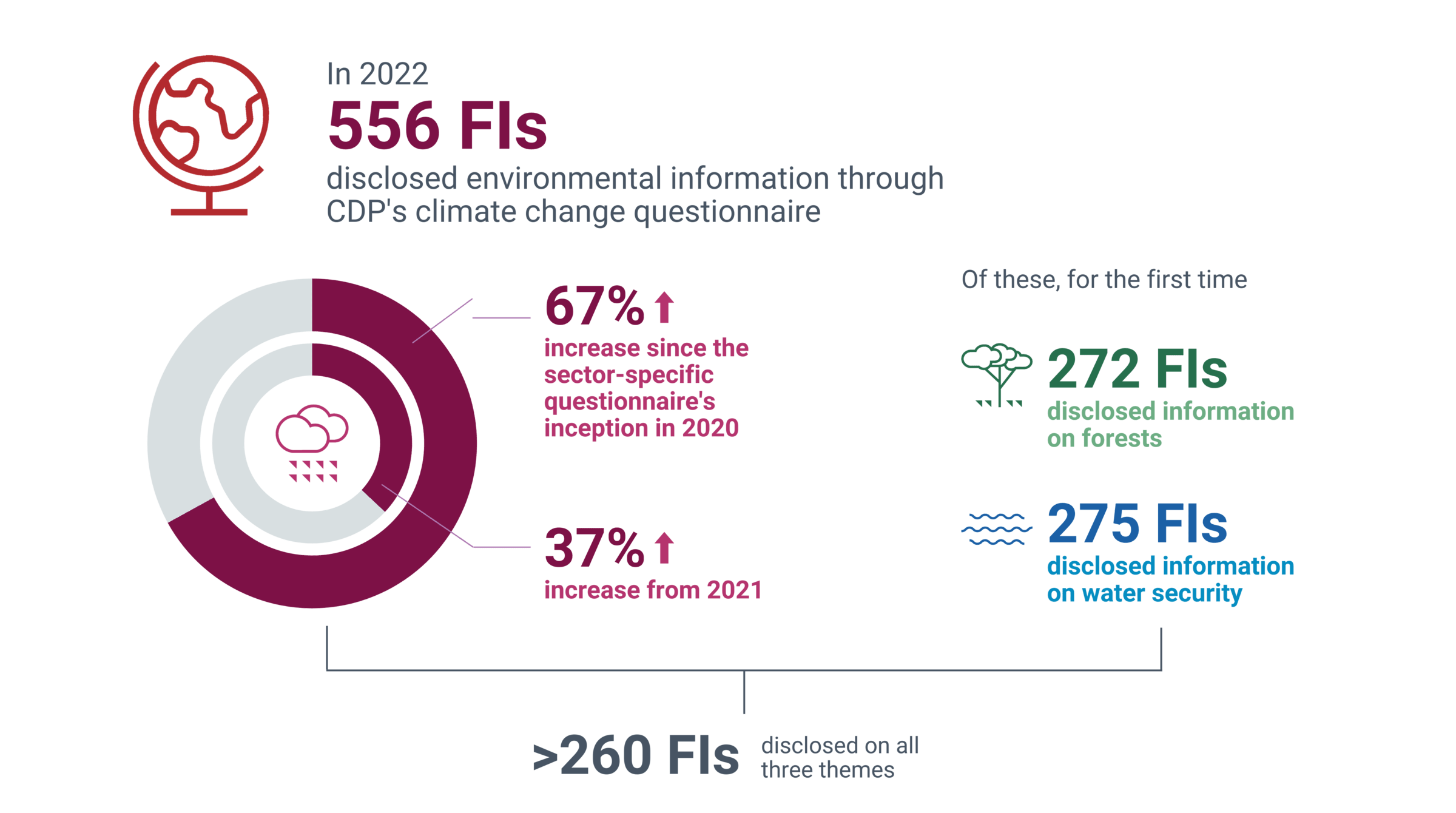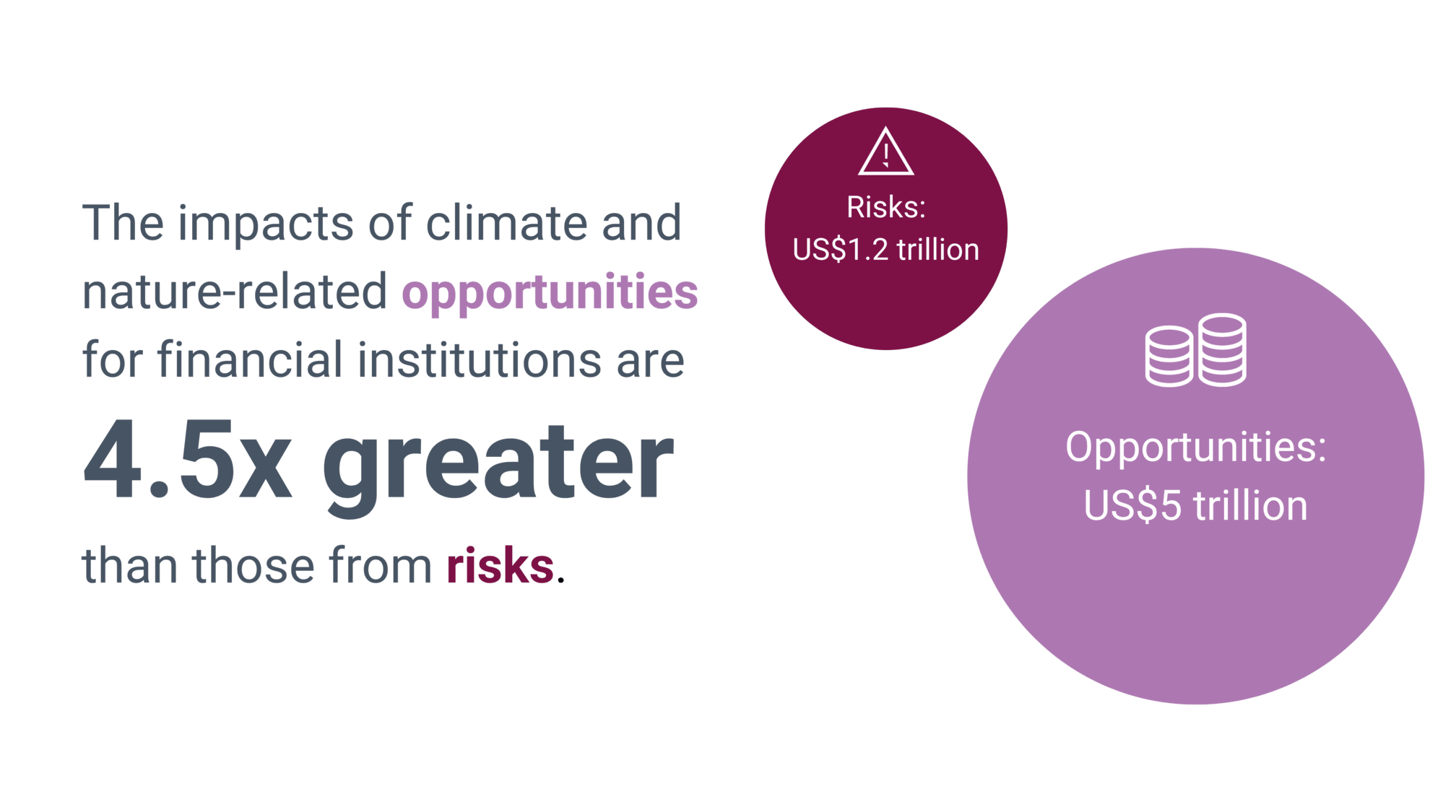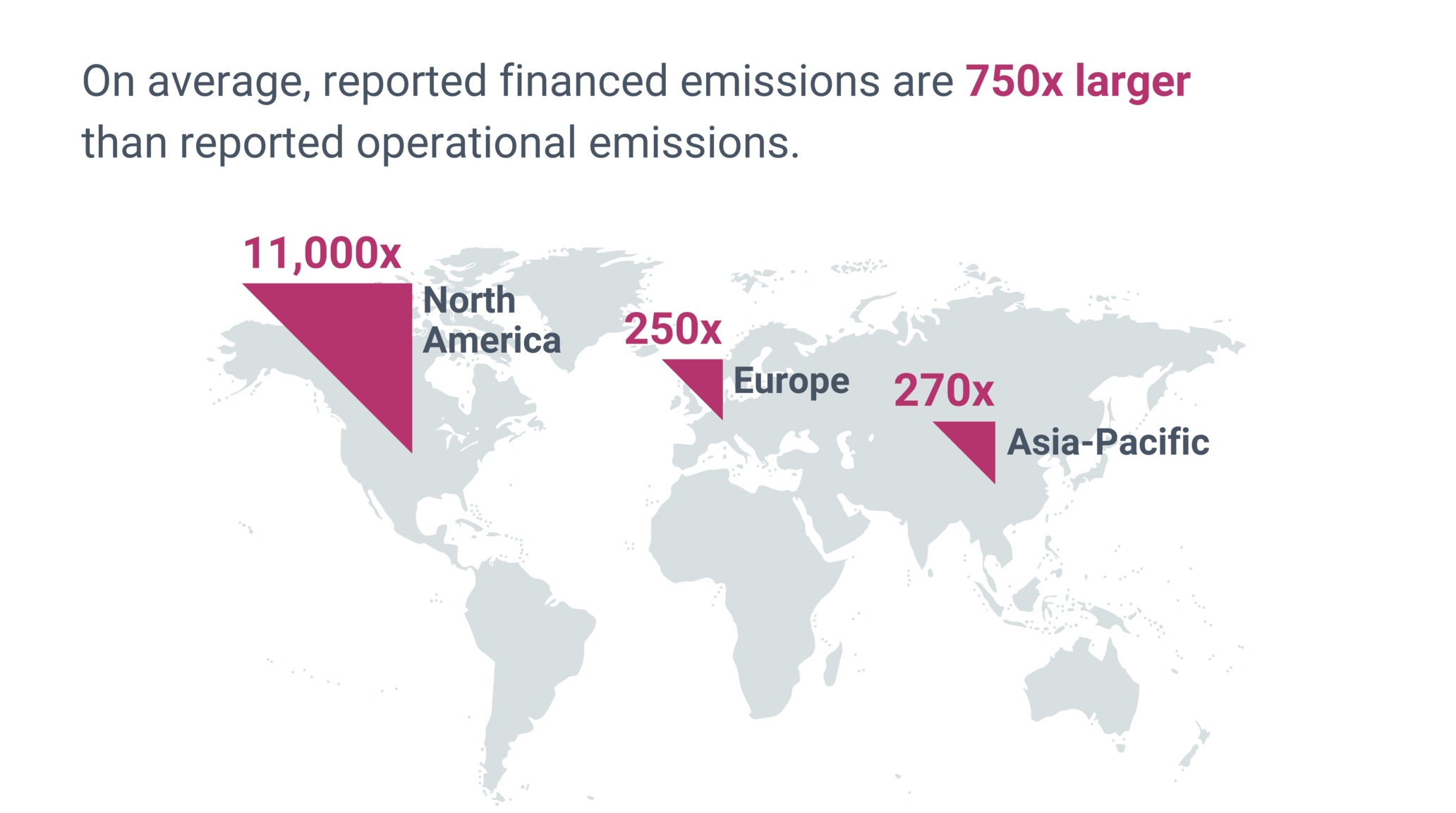Nature in Green Finance: Bridging the gap in environmental reporting
Financial Services Disclosure Report 2022
Key themes:
- Nature reporting lag: Despite prioritizing climate change within their strategies, financial institutions (FIs) are still lagging in reporting on forests, water, and broader nature-related aspects.
- Shifting trends: Trends indicate a gradual shift towards addressing nature-related issues alongside climate change.
- Financial institutions must step up: FIs have a responsibility to demand credible and comprehensive data to support effective climate and nature-informed strategic decisions.
One-fifth of ecosystem services are at risk of collapse. Recognizing nature-related risks and opportunities has become critical, with over half of the world's total GDP highly dependent on nature and its services. Climate change and the degradation of nature are inextricably linked, and therefore must be addressed in an integrated manner.
As nature-related disclosures are set to become a business norm, CDP’s Financial Services Disclosure Report 2022, ‘Nature in Green Finance’, analyzes the current state of environmental reporting by financial institutions (FIs) with a focus on climate change, forests and water security.
The report offers a comprehensive cross-thematic disclosure analysis that highlights the gap in how FIs consider nature-related impact, risks and opportunities compared to climate factors, in their financial decision-making.
While outlining critical steps for financial institutions to embrace nature-positive strategies, the report builds on the sector’s progress since CDP’s 2020 'The Time to Green Finance' report, which emphasized the crucial role FIs can play in achieving net-zero by 2050.
Download the full report now. You can find our press release and other resources, below.
In line with Task Force on Climate-related Financial Disclosures (TCFD) recommendations, our report assesses how FIs are performing against four pillars:
1. Governance
Embedding nature-related oversight in organization-wide governance processes is critical to the systematic integration of nature-related issues across FIs.
Most FIs currently lack the necessary governance mechanism and board-level expertise to integrate nature-related issues across their operations. Only 32% of FIs reporting through CDP have board-level oversight of forests and/or water-related issues, compared to 91% with board-level oversight of climate-related issues.
Banks are leading on board-level oversight of climate and nature-related issues, considering both financial materiality and their own environmental impacts.
An emerging 23% of banks have started including forest-related covenants and 21% have some covenants related to water.
2. Strategy and Implementation
Climate change now influences the business strategies or financial planning of nearly all FIs (95%). An increasing minority of FIs’ strategies are influenced by broader nature-related risks and opportunities in forests (26%) and water security (28%).
Despite the lack of mainstream guidance to include nature in scenarios analysis, some leading FIs are already incorporating forest and water-related factors into their climate-related scenario analysis.
Just a fraction of FIs capitalize on opportunities to provide products and services for mitigating forests (23%) and water security challenges (26%), in contrast to climate change (81%).
3. Risk Management
FIs are identifying 4.5x greater opportunities across climate change, forests and water security in comparison to risks.
Furthermore, an estimated US$5 trillion of identified and reported climate and nature opportunities are mostly left untapped. In comparison, US$1.2 trillion worth of total risk is estimated across climate, forests and water.
4. Metrics and Targets
Despite more than half of the world’s GDP being dependent on nature and its services, estimated at US$44 trillion, financial institutions are struggling to quantify the associated impact of portfolios. Just 10% of FIs currently measure their portfolio impact for forests and water. Encouragingly, an additional 30% plan to do so within the next two years.
Meaningful target setting remains a significant challenge for most FIs, with only 29% having set climate targets and just 11% committed to or validated by the Science-based Targets Initiative (SBTi).
Average reported financed emissions are 750x larger than operational emissions. This varies significantly across regions. Reported financed emissions are 250x greater than operational emissions in Europe, 270x in the Asia-Pacific region, and 11,000x in North America.
The Taskforce on Nature-related Financial Disclosures (TNFD) is preparing to roll out recommendations akin to the TCFD, setting the stage for nature-related disclosures to become a business norm. The Science Based Targets Network are also a core knowledge partner of the TNFD, and the two initiatives have worked together to publish joint guidance for corporates setting science-based targets for nature.
Our report contains case studies detailing forest and water-related best practices by financial institutions such as Aegon Group, Santander Brasil, WHEB Asset Management, BNPP, Société Générale, BBVA and Citi.
The first step for financial institutions is to understand that climate is just one facet of environmental impact. It is important that they take stock of the extent to which their portfolio, operations, services and the businesses they support and rely on, are impacted by nature.Claire Elsdon, Global Director Requesting Authorities - Capital Markets
We're calling on the following groups to take action:
- Leverage voting rights at AGMs to influence stakeholders by signalling priorities on climate and nature-related issues and encouraging integration of nature-related considerations into corporate strategies.
- Step up and demand credible and comprehensive data to drive transformative change throughout the financial system.
- Proactively engage with governments, regulators, supervisors and standard setters to help accelerate the development of dynamic frameworks and implement effective strategies that drive transformative change across the financial ecosystem.
- Introduce and improve high quality mandatory disclosure requirements for corporates and FIs.
- Align financial and fiscal policies with a broader set of environmental sustainability objectives.
- Ensure standards are in place to streamline reporting, enable comparable data (to inform capital allocation decision-making) and maximize global alignment for meeting global environmental goals.
- Coordinate efforts to ensure harmonization and interoperability of standards (to avoid market confusion).
Press release and other resources
Financial institutions can find further guidance regarding their disclosures on transition plans and portfolio metrics in the technical notes, below.
New CDP report reveals nature consistently overlooked in financial decision-making by most financial institutions, despite stepping up climate considerations.
Guidance on the methodologies used to calculate portfolio impact metrics – for banks, asset owners, asset managers and insurers.
Signposts the categories of Scope 3 emissions that companies should be measuring and taking action to mitigate.
Guidance on how investors, banks, and insurers can disclose against their net zero commitments and demonstrate that they have credible climate transition plans.
Previous reports
For more information, get in touch with our Capital Markets team at [email protected].



